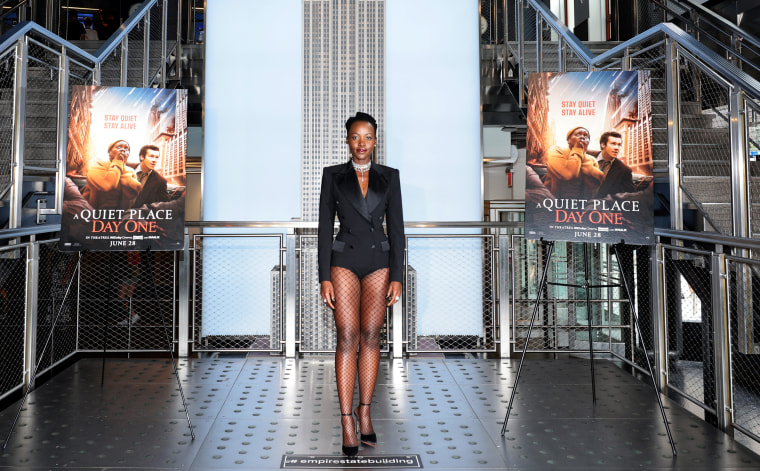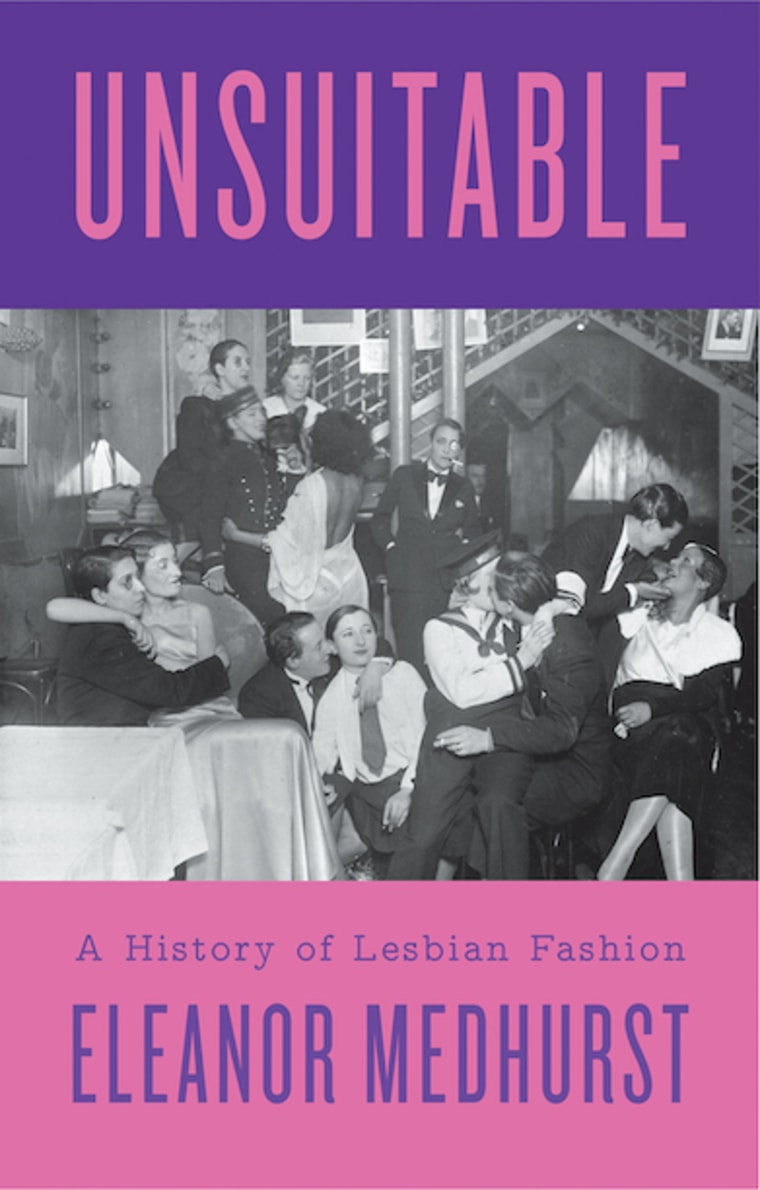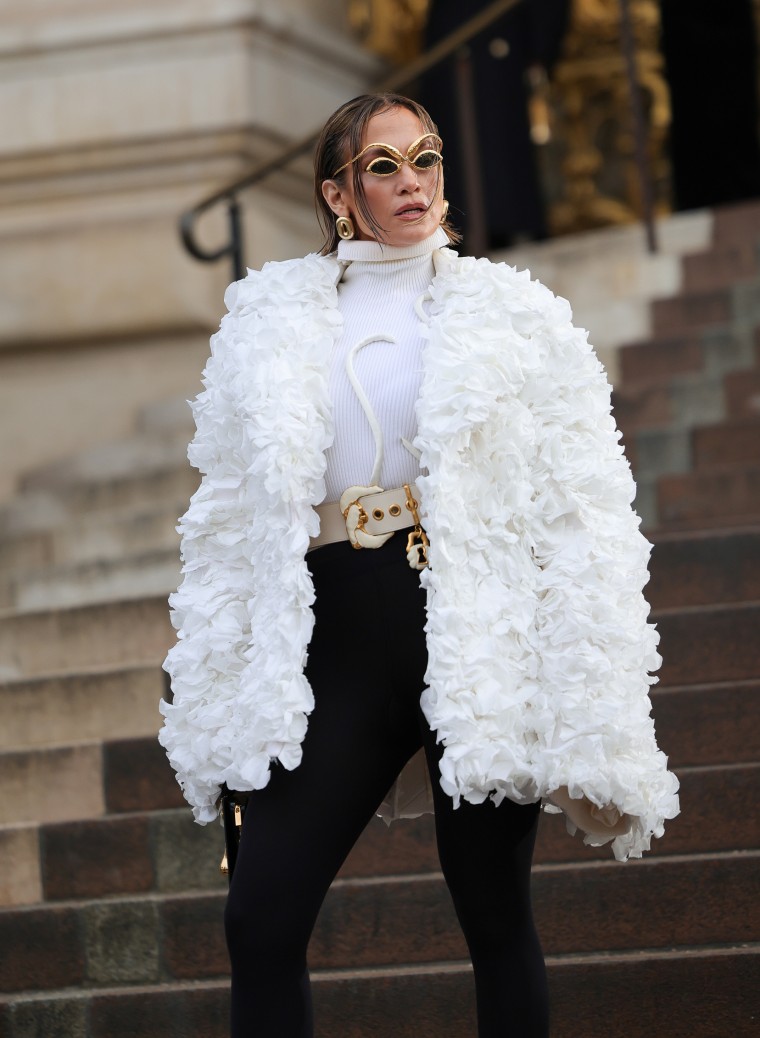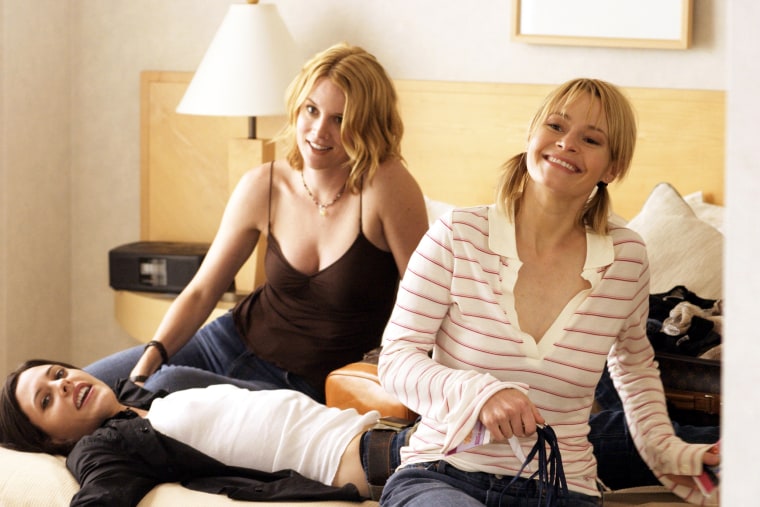From Kristen Stewart combining a black leather blazer and garter belt to Janelle Monáe donning a playful red suit with white bow tie and Reneé Rapp rocking a messy biker tuxedo look, the no-holds-barred era of Sapphic style is in full swing — and women across the sexuality spectrum are adopting the look.
It’s a new age of “power lesbian” fashion, which was once characterized by the strong shoulders and straight lines of power suits. Now, so-called power dressing — a style popularized in the ’80s for businesswomen trying to assert their power through menswear-inspired looks — is about creatively fusing styles and bringing together traditionally masculine and feminine components.
Anita Dolce Vita, owner of the online queer fashion magazine dapperQ, said fashion right now is about endless possibilities, a look that she said lesbians have trailblazed with a philosophy of “I’m going to dress however the heck I want.”
It’s not just queer women who are embracing this playful mix of masculine and feminine styles — blazers and ruffles, long skirts and trench coats — in this new version of power dressing.

During the press tour for “A Quiet Place: Day One,” actor Lupita Nyong’o appeared on the red carpet in a double-breasted blazer with shoulder pads paired with cabaret-style fishnets. Stella McCartney’s Resort 2025 collection was full of oversized collared shirts, half open, with nothing underneath. TikTok fashion trends pioneered by Gen Z feature a careful balance of styles — for example, tiny crop tops and oversize dad pants. And one can’t forget Cate Blanchett, whose feminine power suits are a thing of legend.
History of lesbian fashion
In her new book, “Unsuitable: A History of Lesbian Fashion,” historian Eleanor Medhurst documents the course of lesbian fashion, which she said is frequently determined by politics, and how it has led us to the current era of Sapphic style.
“There’s quite a strong desire for a lot of people to have signaling through clothing, because it’s kind of that connection to history and to a past and to a lineage, and acknowledgement that people like us have existed for a long time,” Medhurst said.

The history of lesbian fashion, she added, has been characterized by binaries, where there is a “push and pull” between butch and femme styles of dressing.
While examples of queer women donning menswear go back hundreds of years — with English diarist Anne Lister, the inspiration behind the TV series “Gentleman Jack,” but just one example — the 1950s saw the butch-femme dynamic take off, where knowledge of this binary of dressing was crucial to belonging to the community.
“It was very much like butches were in suits and femmes were in smart dresses, with handbags,” Medhurst said.
Though butch dressing was not without its risks. Throughout this period, laws criminalizing cross-dressing meant that women who dressed in more masculine styles risked being arrested. Informal “three-article” clothing rules, where women had to wear at least three articles of female clothing in order to not be cross-dressing, targeted gays and lesbians who were searched in bars and on the streets by police.
In the 1960s and ’70s, the women’s movement made it so that feminine styles of dressing were more prominent. Medhurst said that during the women’s movement, people who wanted to be taken seriously as feminists rejected masculine styles of dressing. Then the ’90s popularized lesbian chic, which focused on business wear and quintessential power dressing, bringing menswear-inspired looks back into the fold, she added.
In the era of lesbian chic, the TV show “Sex and the City” captivated audiences with stories of romantic escapades and iconic styling — including fashion influenced by queer styling. While none of the main characters on “Sex and the City” were out, the show’s queer stylist, Patricia Field, seems to have taken inspiration from power-lesbian dressing for characters like New York City lawyer Miranda Hobbes.
Now, the “power” in power lesbian dressing is derived from one’s ability to break away from these binaries. In an Instagram post shared in June, Reneé Rapp embodies the aesthetic in an undone white button up, a long black skirt with a high slit and frilly white socks.
Shunning the male gaze
While lesbian fashion has been transformed through many historical eras, one thing has remained constant: Lesbian fashion isn’t preoccupied with male preferences.
“We were dressing not for the male gaze. We were dressing for ourselves and also from a female gaze,” Dolce Vita said.
What is “liberating,” Dolce Vita added, is that women in the mainstream are adopting this idea of not dressing for men more than ever before.

Take Jennifer Lopez, famous for fashion moments like her plunging palm tree-printed Grammy dress, now wearing an oversize white ruffled blazer, turtleneck and funky gold sunglasses at the Schiaparelli show in Paris.
In today’s political context, Medhurst said, it makes sense why heterosexual women are looking for a new way of dressing that empowers them.
“It definitely makes sense that straight women might want to be like, ‘I want to wear clothes that make me feel powerful,’” she said. “‘I want to wear clothes that make me feel like I’m not catering to men.’”
A more playful approach to style
The result is a whimsical fashion world where lesbian-influenced fashion has given the green light to a harmonious mixing of power dressing staples like suits and collars and more feminine aesthetics.
“There is just generally more of a sense of play, and sort of willingness to merge different aspects of your identity,” said Aviva Dove-Viebahn, a scholar of queer media. She said people now recognize that while fashion can be representative of who you are, it can also just be something to “play around with.”

Dove-Viebahn said that even into the early 2000s, there were only two depictions of lesbian women in the media — a hyperfeminine fashionable woman, like characters in the TV series “The L Word,” or a masculinized lesbian woman who neglected style.
Social media, Medhurst said, is the real catalyst behind this creative era of lesbian fashion and its influence on the mainstream. Where queer fashion lovers can share their style inspirations online, Medhurst says a dialogue about fashion in the queer community has been able to blossom.
“The playfulness within so many kinds of aspects of lesbian fashion today is more apparent than ever before, because of things like social media, because we can see so much more of it,” Medhurst said. “Everything’s just so much more visible, but I don’t think that it’s a spirit that has kind of come out of nowhere.”
For more from NBC Out, sign up for our weekly newsletter.
